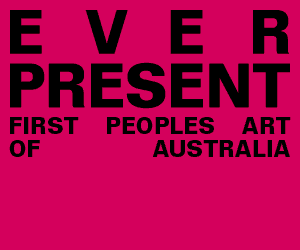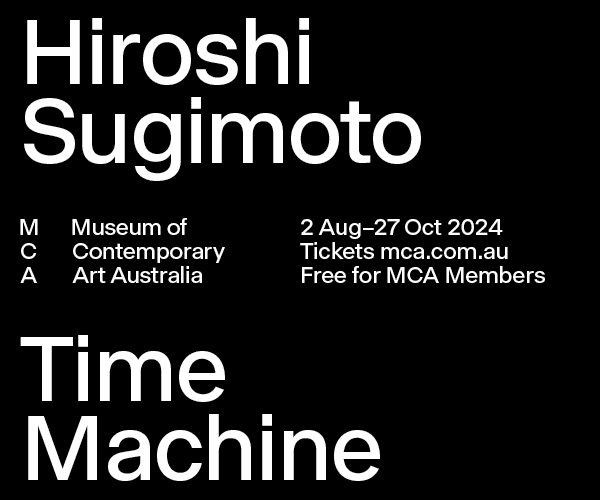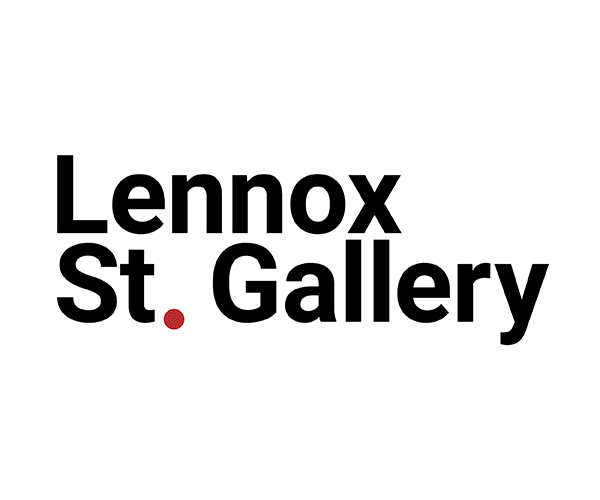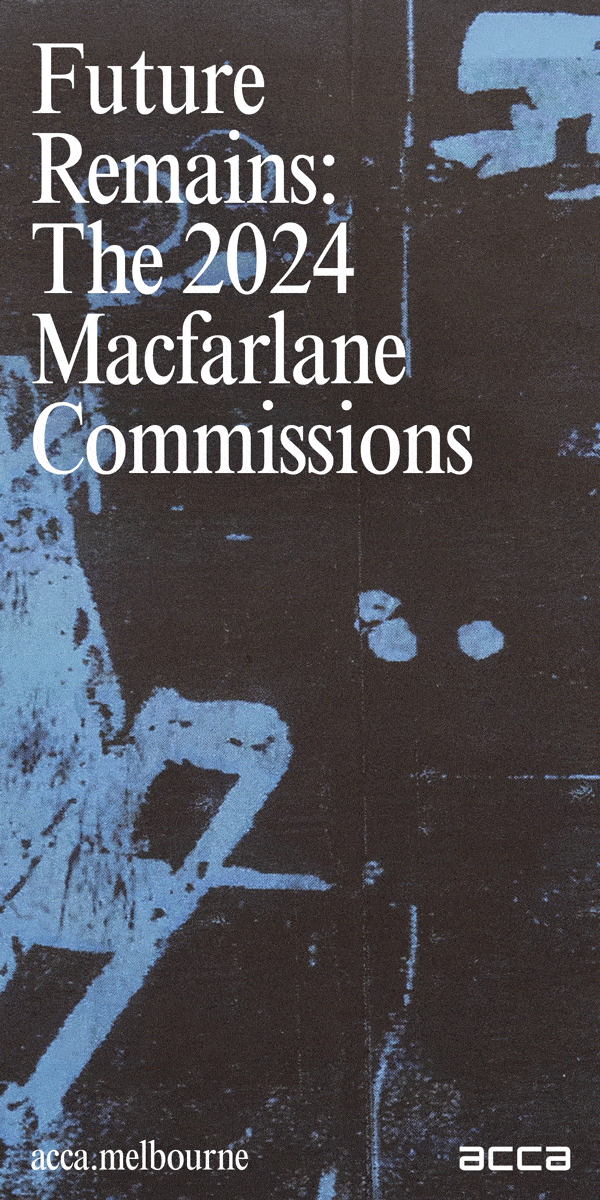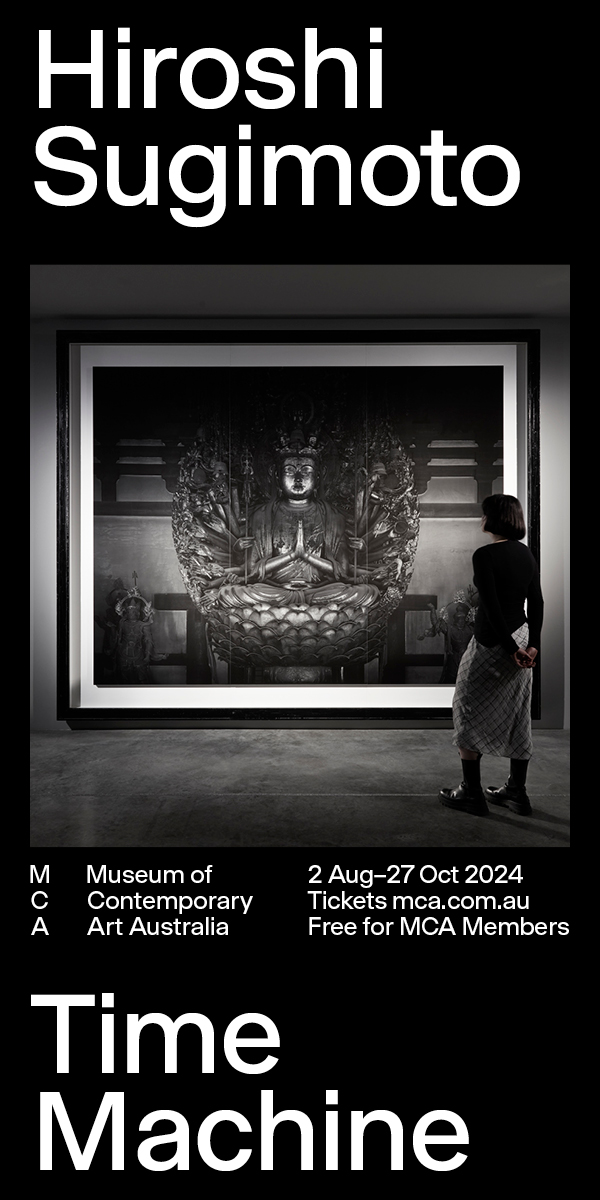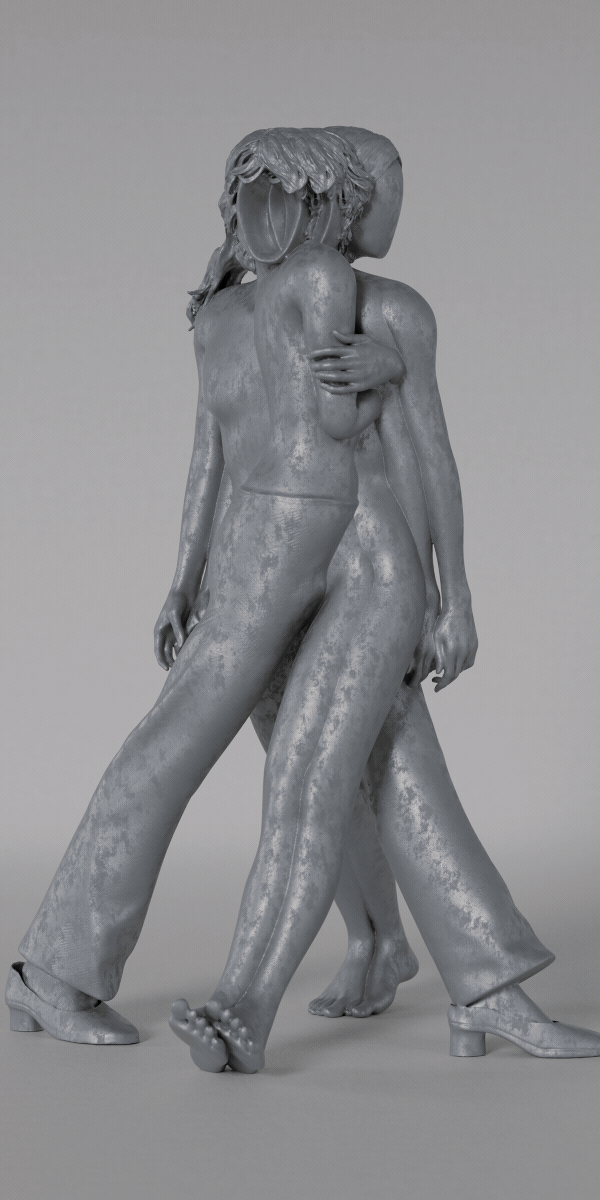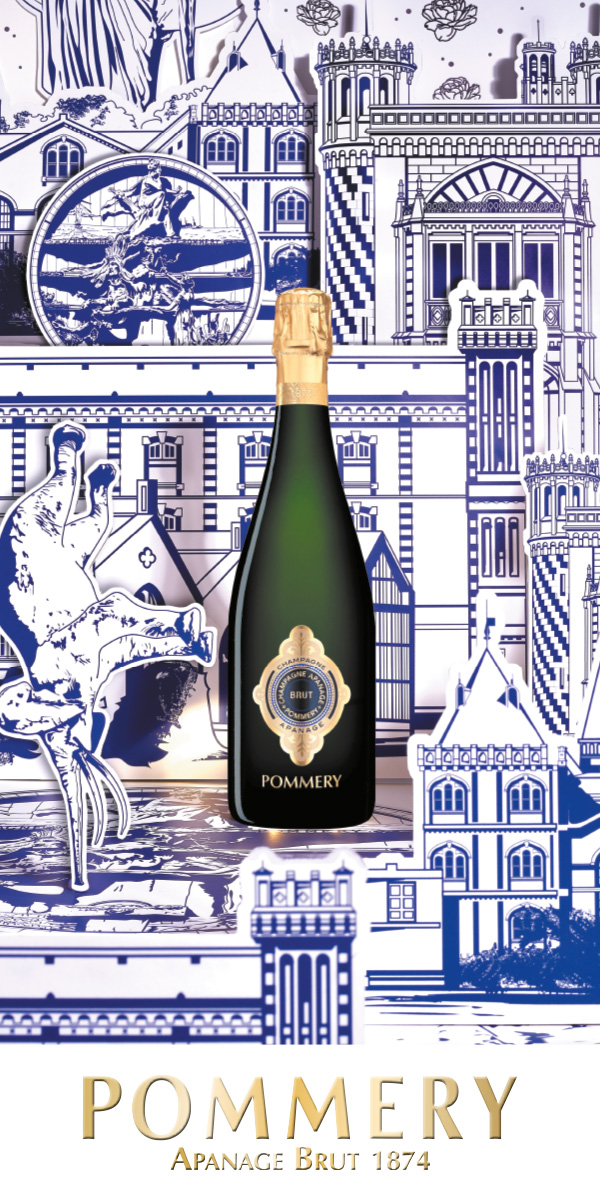Nina Chanel Abney Eyes:
To the Front
Nina Chanel Abney uses witty, one-of-a-kind iconography to explore contemporary debates around identity and race.
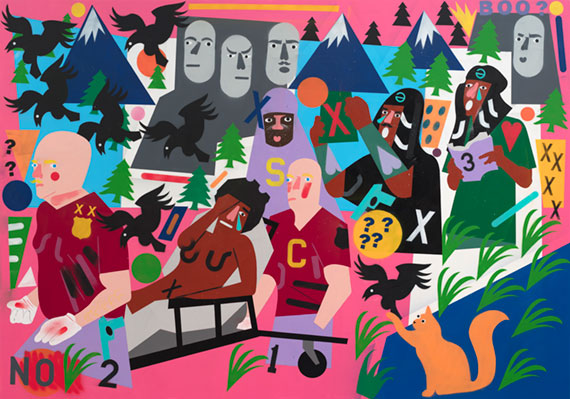
Image credit: Nina Chanel Abney, Black and Blues (detail), 2017, acrylic and spray paint on canvas, 213 x 304 cm. Courtesy the artist, Jack Shainman Gallery, New York and Kravets Wehby Gallery, New York © Nina Chanel Abney
A media pundit pushes buttons to get a reaction, sure, but also to force a point of view. When Nina Chanel Abney pushes buttons – and she does that a lot – it’s not so clear what she wants from you. Abney’s works are visually alluring. They have the rhythm of a Keith Haring mural, with an arresting play of colour. But what she paints is provocative, confusing and violent. They are, as she puts it, easy to swallow but hard to digest.
Still in her 30s, the New York-based artist has enjoyed an astronomical rise. Her 10-year survey, Royal Flush, has been touring the United States since 2017, and is now on show for the last time at the Neuberger Museum of Art in New York. The survey includes paintings, watercolours and collage and opens with the work that started it all: Class of 2007 (2007), a kind of school photo of her MFA cohort at New York’s Parsons School of Design. But Abney flipped things to paint herself as a white guard and her classmates as black prison guards. It was an act that knitted together a critique of both art education and the disproportionate incarceration of people of colour, and the work was quickly selected for the notable touring exhibition 30 Americans. A decade later, Abney was showing at the Palais de Tokyo in Paris, and the Gwangju Biennale in South Korea. Right now in the United States, in addition to Royal Flush, Abney has a solo exhibition of her work at Florida’s Norton Museum of Art and a mural at Boston’s Institute of Contemporary Art.
Abney’s style has changed since Class of 2007, and that development is tracked in Royal Flush. “The earliest works in the show are monumental in size and incorporate a somewhat loose brushstroke,” says Marshall Price from the Nasher Museum of Art, one of the co-curators of the exhibition.
Many of these earlier works are tied to specific moments in time. Close But No Cigar (2008) is a version of the assassination of Martin Luther King Jr, with a downed figure surrounded by screaming cocktail waitresses and casino clowns. Randaleeza (2008) shows a woman in a white bikini standing above a man being torn apart by dogs, and relates to Condoleezza Rice.
In 2009, Abney’s work started becoming smaller, flatter and more stylised. “Within a couple years this evolved into a more digitally inflected style that incorporated letters, short words and emoji-like symbols,” Price says. She then returned to working on a monumental scale again.
Her current style can flick between figuration and abstraction with a speed that mirrors the way we move across digital platforms. Other works provide more space, like the murals she painted for her 2018 exhibition Hot to Trot. Not. at the Palais de Tokyo in Paris.
Abney’s process is intuitive. She usually begins with a base colour and tapes shapes directly onto the surface, which she then fills in with spray paint. Heads and figures are laid down on top, along with templated shapes like noses, ears and eyes, as well as heart symbols and birds. There is a mix-and-match element to her practice that has been honed in the years since Class of 2007. Some of the templates can be followed from work to work, jumping context and shifting their meanings like internet memes. The letter X marks mouths, the dead eyes of fish, genitals, and even – as in Hot to Trot. Not. – stubble on a ‘landing strip’.
Her use of text is similarly clipped and interchangeable. FUCK T*E *OP (2014) calls up police brutality in the words POW, OW and NOO. In Incite (COM) (2015), Abney uses the letters COM to instantly connect the angry heads in the work to the viciousness of internet culture.
Abney’s iconography might be based on easily recognisable elements, but these elements are often combined, obscured or reversed. Brown faces are given pink noses, or vice versa. Uniforms are switched or unclear. Figures with breasts have unexpected genitals. Abney’s works tend to synthesise identities, genders, roles and races in a way that deflects shorthand readings of her work – particularly as it deals with power and race in America.
“Confounding viewers’ expectations is one of the great strengths of Nina’s work,” Price says. Viewers might be seduced by Abney’s bright colours and playful geometric shapes, but when they continue to look they find “a more serious narrative, or narratives. These narratives are often not linear in nature and it’s unclear what the dynamics are between the figures that populate her works. In doing so, Nina tells visual stories from multiple perspectives simultaneously,” he says.
Abney seems reluctant to be pigeonholed, even as magazines like Vanity Fair call her a champion of the Black Lives Matter movement. Rather than be drawn, she says she wants to give people options, and she frequently brings humour into her work despite the serious subject matter.
For Price, Abney’s work is part of “a long lineage of political artists, from those of the 1930s who railed against fascism, to those in the 1960s and 1970s who addressed issues of feminism and civil rights.” He notes that those critiques tended to be explicit. “Nina does this sometimes, but more often than not her critique is less overt, or rendered in such a way that the viewer could read the imagery in a variety of ways,” he says.
After Royal Flush began its tour, Abney exhibited Seized the Imagination at Jack Shainman Gallery and Safe House at Mary Boone Gallery, both in New York. They were a kind of present and past. Seized the Imagination presented a cacophony of competing references, like a condensed social media feed. Safe House related to a more 1950s style of othering, with works like Guns and Butter (2017) that read “Watch out for the other guy!” Abney has also produced a series of monotypes for Pace Prints, and has collaborated on a series of Google phone cases and skate decks. Public murals, like the one she made for the Gwangju Biennale, continue to be a part of her practice, too.
Abney’s work is relentless, examining oppression, subjugation and complicity in contemporary society and the way these dynamics are often built into our social structures. It is intense work that leaves a strange, conflicted aftertaste. But Abney is not going to tell you how to make it stop. In some works, the brightness of her palette feels like a light at the end of the tunnel – as though, faced with feelings of confusion and helplessness, the answer is not to turn away, but to keep looking. Others, like Hothouse (2017), a lineup of tired-looking women baring their arses, offer reminders that watching is not without its own politics – or markets. Each work seems to engineer its own rules, drawing out our awareness of our complicity in different ways. Maybe the first step in understanding the systems that shape our world is to figure out where we stand within them.
Nina Chanel Abney is represented by Jack Shainman Gallery, New York and Pace Prints, New York.
jackshainman.com
paceprints.com
ninachanel.com
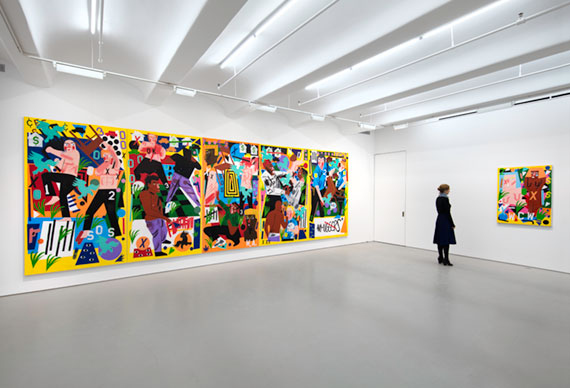
Image credit: Installation view Nina Chanel Abney, Seized the Imagination, 2017, Jack Shainman Gallery, New York . Courtesy the artist and Jack Shainman Gallery, New York © Nina Chanel Abney
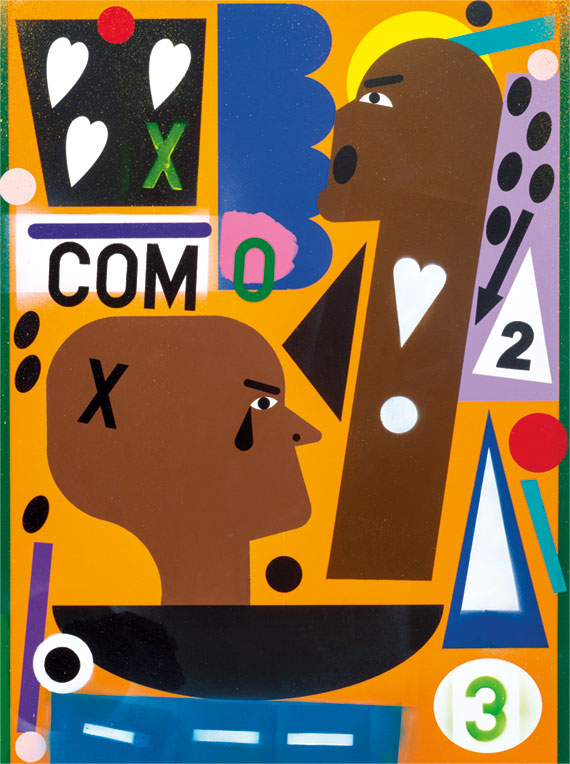
Image credit: Nina Chanel Abney, Incite (COM), 2015, unique ultrachrome pigmented print, acrylic & spray paint on canvas, 121.9 x 91.4 cm. Collection of Isis Heslin and Jacqueline T. Martin. Courtesy the artist, Jack Shainman Gallery, New York and Kravets Wehby Gallery, New York © Nina Chanel Abney
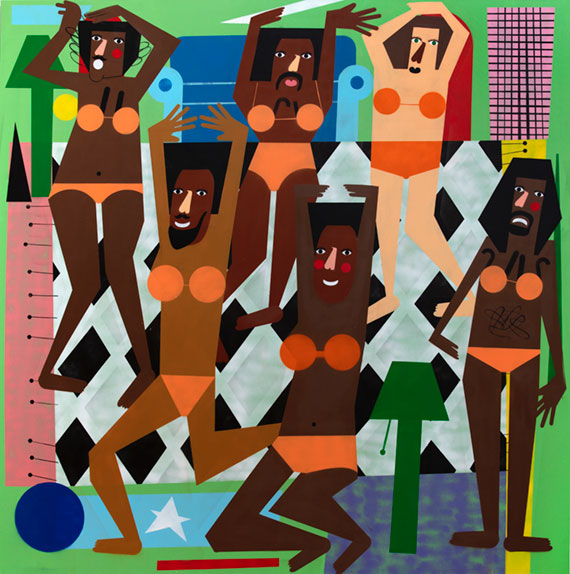
Image credit: Nina Chanel Abney, Strut for Noah, 2019, acrylic and spray paint on canvas 243.8 x 243.8 cm. Courtesy the artist, Jack Shainman Gallery, New York and Kravets Wehby Gallery, New York © Nina Chanel Abney
This article was originally published in VAULT Issue 26, MAY 2019.

Click here to Subscribe




